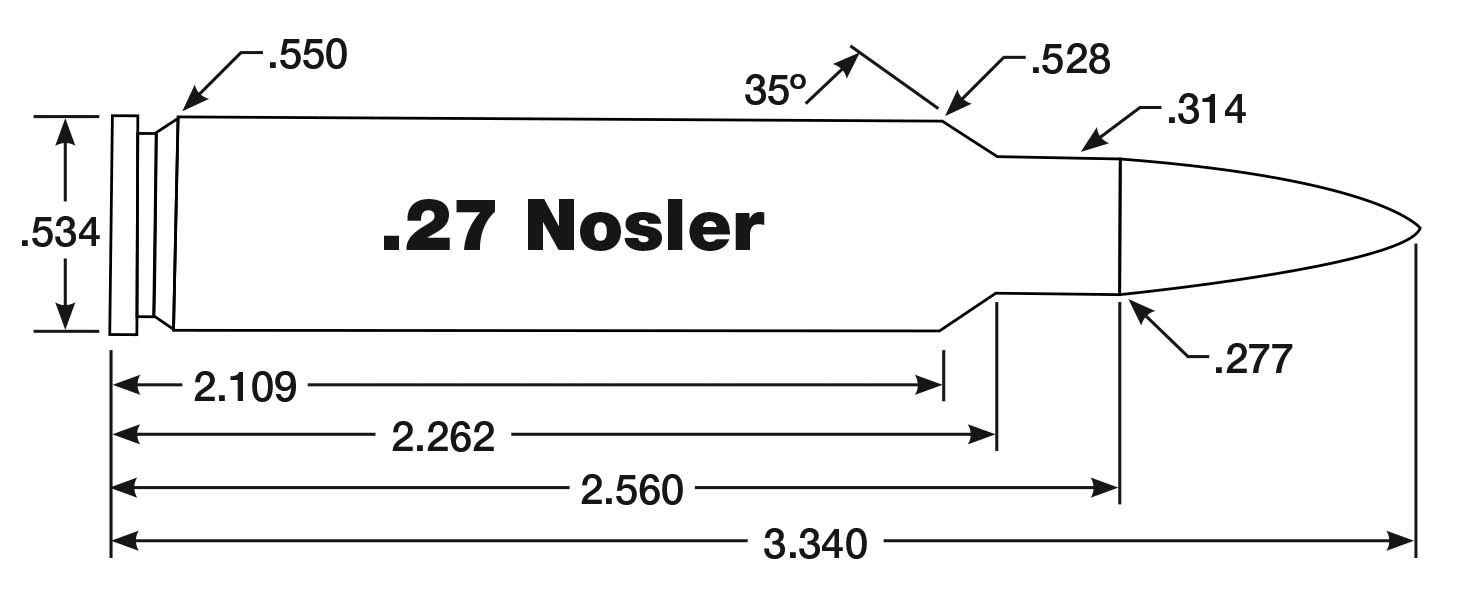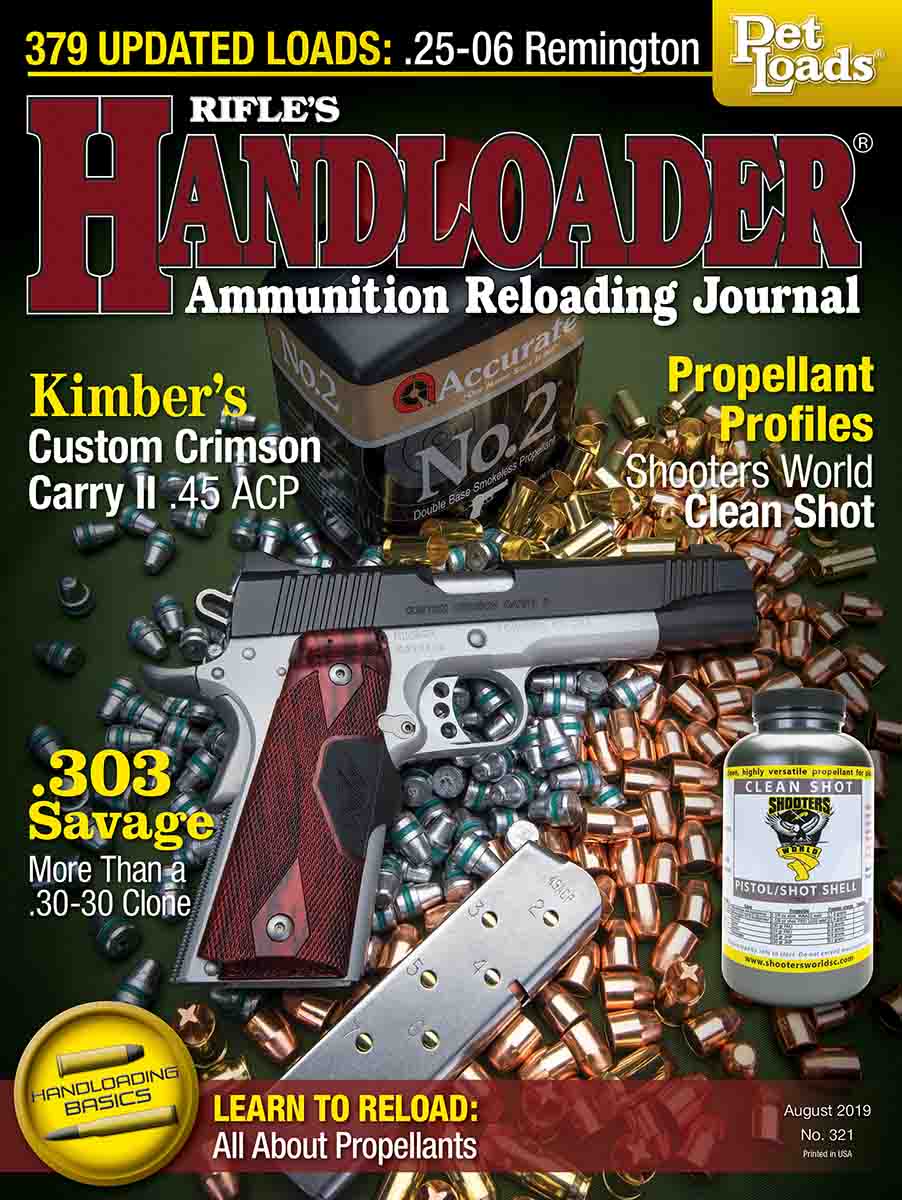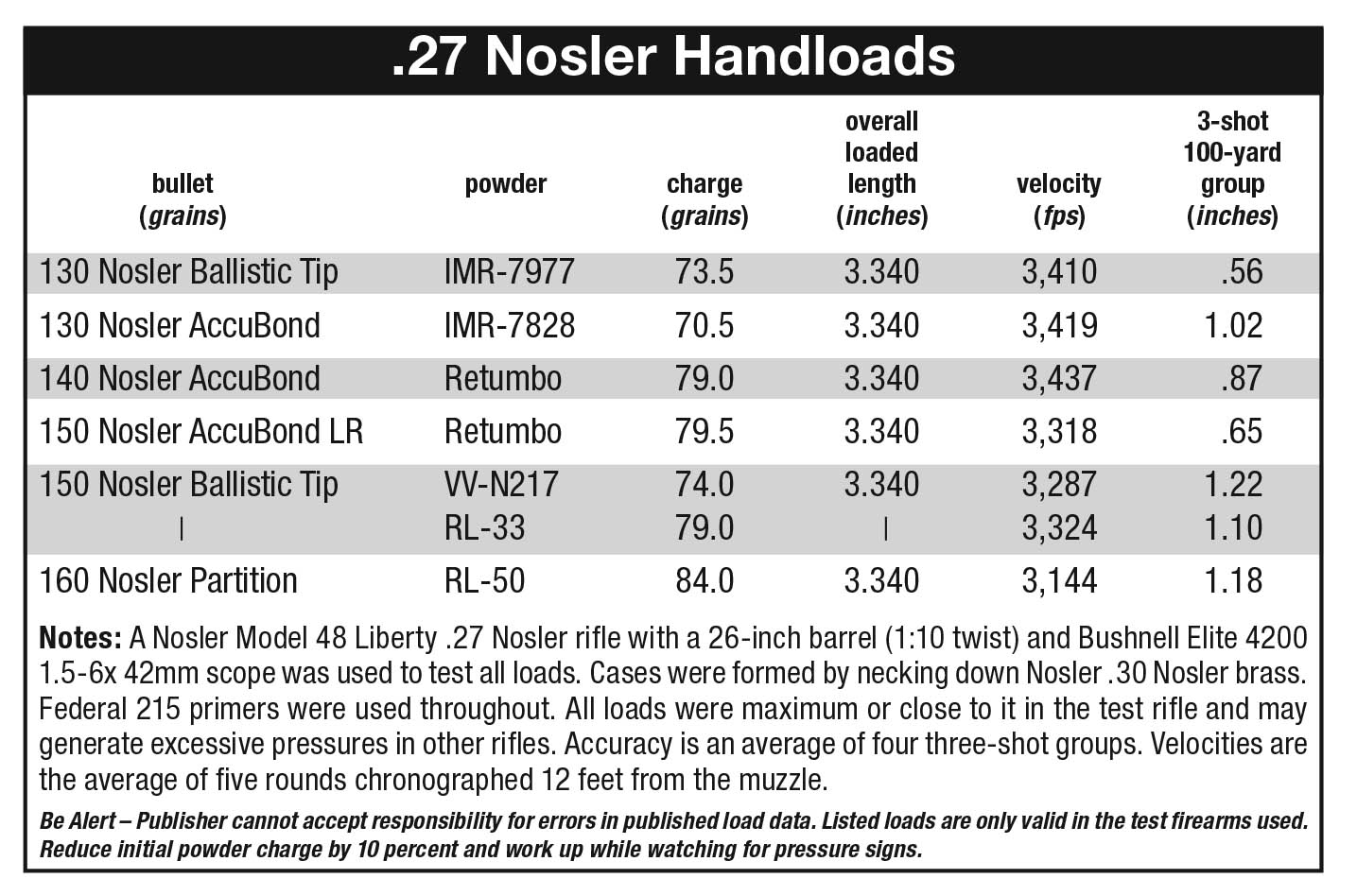All the cartridges introduced by Nosler to date were developed by Mike Lake, the senior manager of engineering, research and development at the company. His previous accomplishments include the .26 Nosler introduced in 2013, the .28 Nosler (2015), the .30 Nosler (2016) and the .33 Nosler introduced in 2017. Waiting impatiently in the wings for official introduction are the .27 Nosler, the .35 Nosler and the .36 Nosler. All are on the .404 Jeffery case, and rim diameter is the same as for various Holland & Holland- style belted cases. [Wolfe Publishing uses a decimal on Nosler cartridges. – Ed.]
Nosler ammunition is quite popular in a number of European countries, and the .36 Nosler would be aimed at hunters there who continue keeping various 9.3mm cartridges alive. For several years the company has been making .366-inch, 250-grain AccuBond, 250-grain Ballistic Tip, 286-grain Partition and 286-grain Solid bullets. Load data for the 9.3x62mm Mauser, 9.3x74R and 9.6x64mm Brenneke is in Nosler’s Reloading Guides 7 and 8. Whether or not Model 48 rifles in .36 Nosler and ammunition for them will eventually go into production is anybody’s guess as this is written.

Layne’s Model 48 Liberty .27 Nosler test rifle with a 26-inch barrel has a 1:10 twist. It was topped with a Bushnell Elite 4200 1.5-6x 42mm scope.
The same goes for the .35 Nosler, which has a bit of familiar history behind it. Back in 1992, Bob Nosler became the owner of the second rifle in .358 Shooting Times Alaskan (STA) built by Kenny Jarrett. The late Chub Eastman, who worked for him at the time, was first to bag an elk with the new wildcat. Should the company eventually move forward with .35 Nosler ammunition and rifles, the performance of the .358 STA will likely be duplicated. The previously noted Nosler manuals have data for that cartridge.
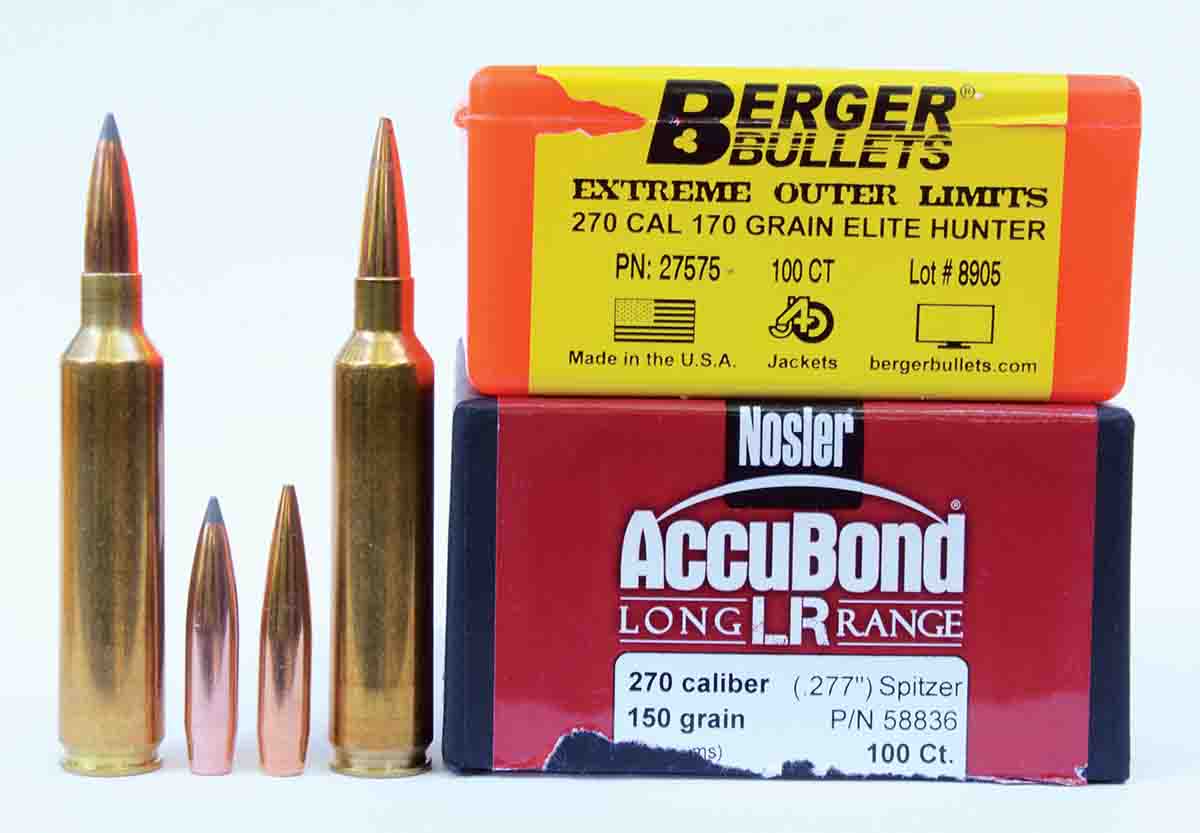
The 1:10 twist of the test rifle was quick enough to stabilize the long Nosler 150-grain tipped AccuBond LR bullet. Because the longer Berger 170-grain Elite Hunter requires a 1:8 twist, it was not tried in the Nosler rifle. If a .27 Nosler rifle eventually goes into production, a quicker twist will be needed.
Like the .35 Nosler and .36 Nosler, the .27 Nosler has been registered with SAAMI, but no ammunition or unprimed cases have been produced. When my friends in Bend, Oregon, offered to chamber a Model 48 Liberty for the cartridge, I pounced on the opportunity to check out its potential. The rifle weighs 8 pounds, 13.5 ounces with a Bushnell Elite 4200 1.5-6x 42mm scope in Talley lightweight mounts. Magazine capacity is three rounds. Its 26-inch Shilen barrel measures 1.15 inches at the receiver, and from there it tapers to a muzzle diameter of .635 inch. While a 1:10 rifling twist rate proved to be quick enough to stabilize the 150-grain AccuBond LR, which is 1.421 inches long, even longer bullets are available. The Berger 170-grain Elite Hunter at a length of 1.488 inches is an example. Berger recommends a 1:8 twist for it, so I did not try it in the Nosler rifle. Should Nosler eventually move forward with production rifles in .27 Nosler, a 1:8 twist would be in order. That twist rate should also deliver acceptable accuracy with bullets as light as 130 grains.
When designing the .27 Nosler and its six littermates, Nosler engineers kept overall cartridge length at 3.340 inches for compatibility with the magazine of the Model 48 rifle. Going to .30 caliber and larger required shortening the case and moving the shoulder datum back to a shorter dimension in order to have sufficient neck length. Even more important, length dimensions were changed to prevent cross-caliber chambering. As an example, it was decided that bullet and cartridge neck diameter alone were not enough to guarantee that someone could not force a .28 Nosler cartridge into a rifle chambered for the .27 Nosler. Locating the shoulder of the .27 Nosler a bit farther to the rear eliminated the possibility of that happening. Such a safety review was done for all possible combinations of the entire seven-cartridge family. If this sounds familiar, you obviously already know why the shoulder of the .280 Remington is farther forward than the shoulder of the .270 Winchester.
I found the .27 Nosler case to be easily formed by necking down .30 Nosler brass. On the first go-around, I ran a case through an RCBS full-length resizing die with its mouth in light contact with the shellholder. The bolt of the Model 48 rifle would close and lock up on the case, but the fit was too snug for ammunition to be used for hunting. Lowering the ram and turning in the die just enough to force the RCBS Rock Chucker press to cam slightly over when the ram was fully raised did the trick. The bolt of the rifle would close with only a slight trace of resistance from the chambered case.
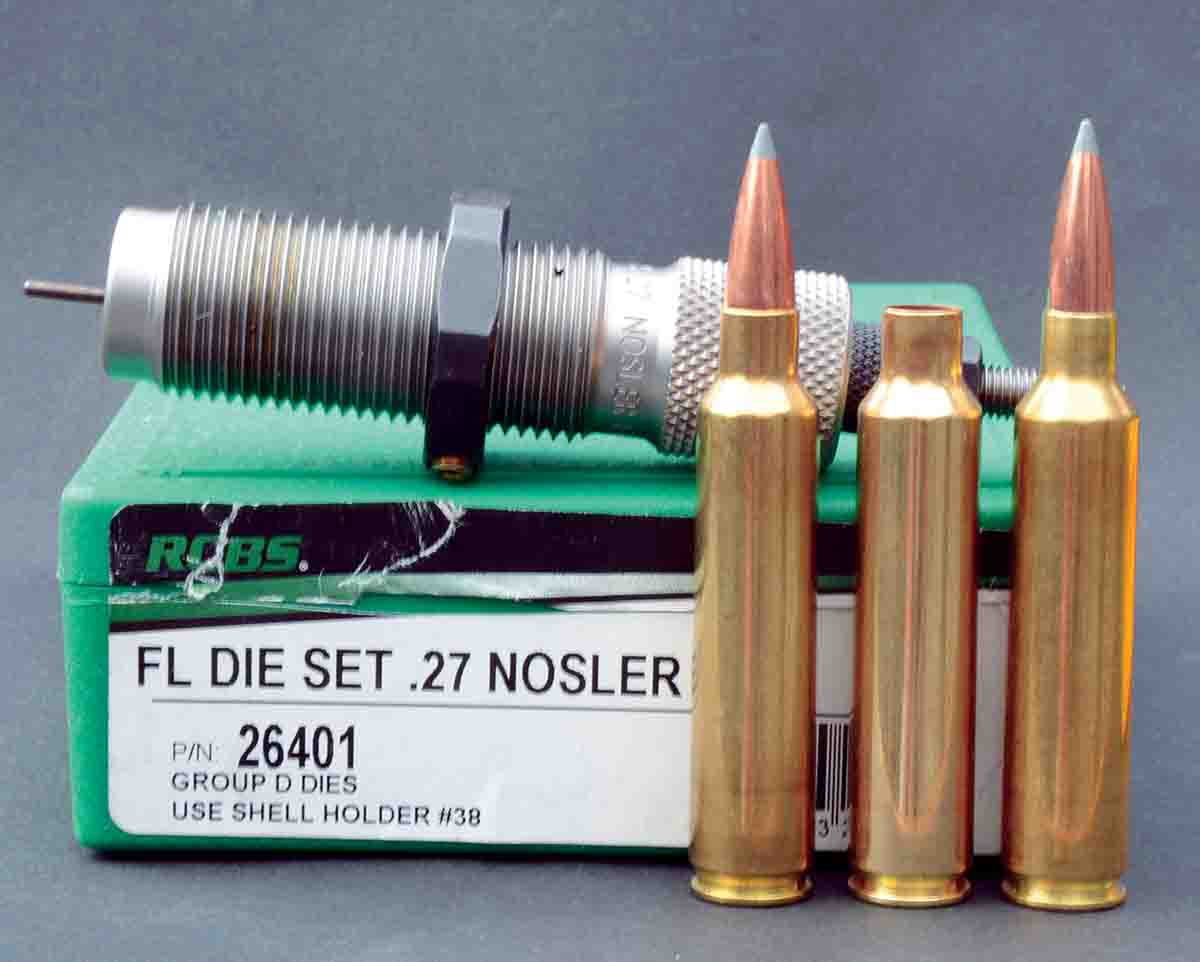
The .27 Nosler case is formed by necking down the .30 Nosler case. Shown (left to right) is a .30 Nosler cartridge, a .30 Nosler case and a .27 Nosler cartridge.
I find Nosler brass to be excellent in both quality and durability. Neck length grew slightly after cases had been pounded by four full-power loads, but not enough to require trimming. Gross water capacity was 104.6 grains versus 83.1 grains for .270 Weatherby Magnum cases made by Nosler. Cartridge neck diameter with a bullet seated was .311 inch, which is .005 inch smaller than SAAMI maximum.
Velocity spread for the .27 Nosler ranged from a low of 8 fps to a high of 20 fps, and that’s darned impressive in anybody’s book. IMR-7977 and Retumbo provided the lowest velocity spreads. I especially like IMR-7977 and IMR-7828 behind 130-grain bullets, and Retumbo proved to be a great choice with those weighing 140 and 150 grains. The burn rate of Reloder 50 seems to be ideal for the Nosler 160-grain Partition, and while I did not get around to trying H-50BMG and US 869 with that bullet, they should also work quite well. Those three powders should also be great candidates for heaver bullets in quick-twist rifles. Other likely propellants behind various bullet weights in the .27 Nosler include IMR-8133, Reloder 33, Reloder 25 and Reloder 26.
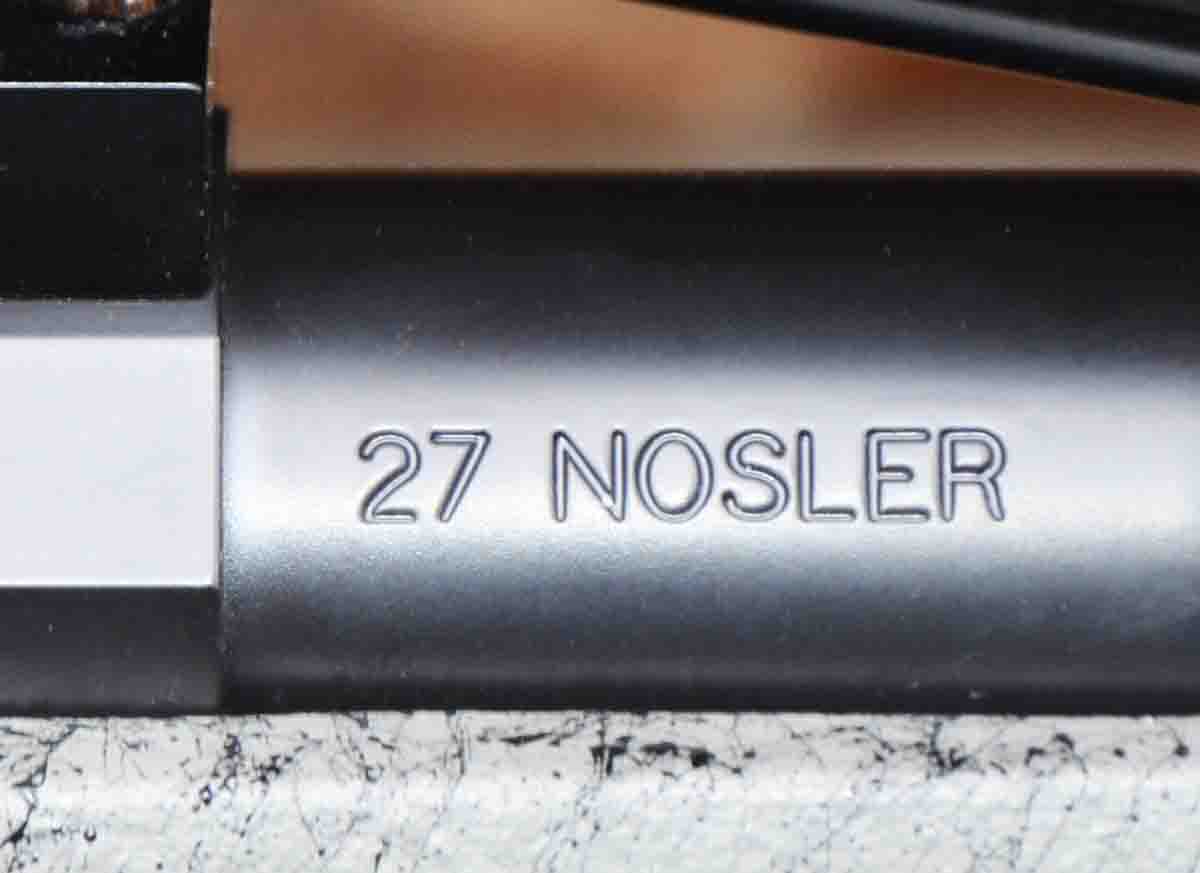
When Layne received his .27 Nosler, it was one of only a few that had been built by Nosler.
Don’t expect to squeeze over 100 rounds of ammunition from a pound of powder. Depending on the powder and bullet used, charge weights in my handloads ranged from 70.5 to 84.0 grains. SAAMI average maximum pressure for the .27 Nosler is 65,000 psi. The loads for 140- and 150-grain bullets in the accompanying table were furnished by Nosler. I developed the loads for 130- and 160-grain bullets, and while they have not been pressure-tested, they were safe maximums in my rifle. Pacific Tool & Gauge has chamber reamers for all Nosler cartridges, including the .27 Nosler, .35 Nosler and .36 Nosler.
